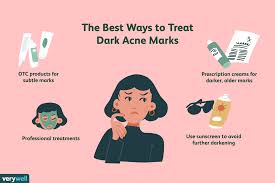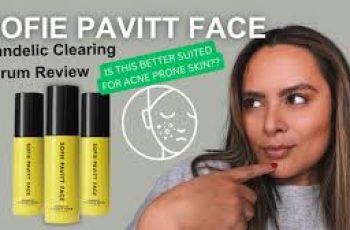
Post-inflammatory hyperpigmentation (PIH) is a skin condition where dark patches or spots develop after inflammation, and it can be frustrating to deal with, especially for those with darker skin tones.
This discoloration occurs due to an increased production of melanin after skin trauma such as acne, eczema, allergic reactions, or even cosmetic procedures like laser treatments or peels.
It is often referred to as Post Inflammatory Pigment Alteration (PIPA) or dermal hypermelanosis and tends to affect people with Fitzpatrick Skin Types 4, 5, and 6 more prominently.
Hyperpigmentation leads to an uneven skin tone and often persists unless treated properly, and some Baumann Skin Types are more prone to these concerns and require targeted lightening skincare ingredients.
Though post-inflammatory hyperpigmentation may appear permanent, it is not; over time, with proper skincare and treatment, PIH naturally fades, though the process can take weeks or even months.
The fading of PIH depends on several factors including skin type, the depth of pigmentation, skincare habits, and whether or not sun exposure is effectively managed.
Using sunscreen consistently is one of the most crucial steps in reducing PIH because ultraviolet rays stimulate melanin production and worsen discoloration.
Even after the initial cause of inflammation has been resolved, hyperpigmentation can linger for over 40 days, as this is the average time required for a full skin cell turnover cycle.
Sticking to a dermatologist-recommended routine can speed up the fading process, including treatments like chemical peels, tyrosinase inhibitors, and retinoids under professional supervision.
It is important not to expect overnight results; most effective skincare routines require weeks of consistent use to produce visible improvements in skin clarity and tone.
Combining topical treatments with lifestyle changes such as sun avoidance, reduced stress, and proper diet can provide more comprehensive and long-lasting results in treating PIH.
A customized skincare routine is essential for managing PIH and preventing future discoloration, and knowing your Baumann Skin Type can help tailor the regimen more accurately.
Chemical peels are often used as a treatment for PIH, but it is vital to choose a qualified provider because inappropriate usage can worsen the pigmentation or cause new inflammation.
For dry and sensitive skin types, glycolic acid peels are generally safer than salicylic acid peels because they help exfoliate while retaining moisture in the skin barrier.
Salicylic acid is oil-soluble and works better for oily skin, but it can be too harsh for sensitive types, potentially triggering more inflammation and worsening PIH.
Skin-lightening creams for PIH typically contain ingredients like niacinamide, azelaic acid, kojic acid, licorice root extract, and vitamin C, which help reduce melanin production.
These creams may also include exfoliants like alpha hydroxy acids (AHAs) or beta hydroxy acids (BHAs) to promote the turnover of pigmented skin cells and reveal newer, brighter skin.
Tyrosinase inhibitors are particularly effective in treating PIH because they prevent the enzyme that catalyzes melanin production, helping to lighten spots at their source.
The most effective PIH products use a combination of ingredients to target different stages of pigmentation formation for faster and more visible results.
It’s also important to treat the underlying cause of inflammation—such as acne—because the dark spots will not fade fully if new breakouts continue to occur.
PIH cleansers can also support a skin-brightening routine by removing dead skin cells and prepping the skin to absorb lightening ingredients more effectively.
When choosing a cleanser, opt for one with linoleic acid or calming botanicals that support barrier repair while reducing inflammation, especially for sensitive skin types.
Avoid cleansers that are too acidic or contain harsh sulfates, as they can irritate the skin further and prolong the pigmentation process by triggering additional inflammation.
Just like with melasma, the issue in PIH is excess melanin, so many recommendations for melasma skincare—such as brightening serums and antioxidant-rich cleansers—are also effective.
Topical antioxidants like vitamin C, green tea extract, and resveratrol can reduce oxidative stress, which is one of the triggers of post-inflammatory pigmentation.
In addition to topical treatments, internal support like vitamins and supplements can make a difference in healing and protecting the skin from further hyperpigmentation.
Stress is a major contributor to pigmentation because it increases cortisol, a hormone that can worsen inflammation and trigger more melanin production in stressed skin.
Supplements like Heliocare, which contains the antioxidant polypodium leucotomos, help reduce oxidative stress and protect skin from UV-induced pigmentation and inflammation.
Getting enough sleep, managing stress, and eating a balanced diet rich in antioxidants, omega-3s, and anti-inflammatory nutrients also support healthy skin from within.
Hydration is key—both internally and topically—because dehydrated skin has a compromised barrier that is more prone to irritation and uneven pigmentation.
Common causes of PIH include acne, eczema, insect bites, burns, allergic reactions, and cosmetic procedures, all of which stimulate melanocyte activity in the affected area.
Inflammation activates melanocytes, the pigment-producing cells in the skin, and the excess melanin they produce is deposited unevenly, causing dark marks to form.
Sun exposure intensifies PIH by further stimulating melanocytes, so avoiding the sun and using high-SPF broad-spectrum sunscreen daily is non-negotiable in treating it.
Pregnancy-related hormonal changes can cause PIH, especially when estrogen and progesterone increase melanocyte sensitivity, as seen in melasma or “the mask of pregnancy.”
Hormone replacement therapy or birth control pills may also contribute to PIH due to the same hormonal effects, which make the skin more reactive to inflammation.
Phytophotodermatitis is another cause of PIH, where skin reacts to sunlight after contact with certain plants or fruits like limes, celery, and figs, leading to dark patches.
This condition is sometimes called “Margarita dermatitis” because it often appears after sun exposure and contact with citrus drinks like margaritas or Bloody Mary cocktails.
Sunspots or solar lentigos are also a type of hyperpigmentation that appears after long-term sun exposure, and they often appear on the face, chest, and hands as flat brown spots.
Another form of pigmentation is Acanthosis Nigricans, which manifests as thick, velvety dark patches in skin folds like the neck or underarms and is often linked to insulin resistance.
Ochronosis is a rare but serious cause of hyperpigmentation involving dark bluish-black patches caused by long-term use of hydroquinone or enzyme deficiencies.
Addison’s disease, a hormonal disorder, can also cause hyperpigmentation, particularly on the face and other sun-exposed areas due to increased adrenocorticotropic hormone (ACTH).
Treating PIH effectively requires a multi-pronged approach that includes identifying and eliminating the root cause, using targeted topical treatments, and preventing new discoloration.
Consistency is key; whether you’re applying a brightening serum, wearing sunscreen, or taking supplements, make it a part of your daily routine to see gradual but lasting improvements.
Avoid picking at your skin, as trauma and inflammation only deepen pigmentation and make it harder to fade, so adopt a gentle skincare approach and avoid physical irritants.
If over-the-counter treatments are not enough, consult a dermatologist who can recommend advanced options like laser treatments, microneedling, or prescription-strength topicals.
Always start slowly when introducing new active ingredients like acids or retinoids into your regimen to minimize irritation, and do patch testing to ensure compatibility with your skin.
Your journey to clear, even-toned skin may be long, but with the right combination of care, patience, and protection, you can effectively treat and reduce the appearance of PIH.
Stay proactive, protect your skin from further inflammation, and commit to a skin-friendly lifestyle that supports healing from both the outside and the inside.


